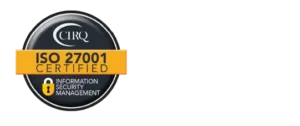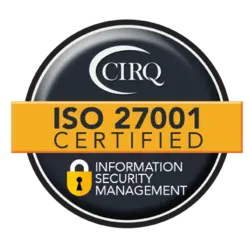The Great Reshuffle and the Future of Work
The desire for more flexible work arrangements, and the movement of workers towards jobs that offer these benefits, is inextricably linked to the changing nature of work itself.
What is the Great Re-shuffle?
In 2021, the term ‘Great Resignation’, defined by Texas management professor Anthony Klotz, began to appear in business publications around the world, in reference to a spike in the number of people quitting their jobs. Most attributed this to pandemic fatigue, specifically with respect to companies who weren’t handling a transition to remote work very well. Later, the term ‘Great Reshuffle’ was increasingly used to describe the trend underway, as people sought and took jobs that offered the kind of flexibility in work arrangements they were looking for.
The dynamics leading to the Reshuffle took greater prominence through the pandemic, but let’s be clear, they were already in place prior to COVID’s emergence.
The desire for more flexible work arrangements, and the movement of workers towards jobs that offer them, is inextricably linked to the changing nature of work itself. A growing number of jobs can be done as well from just about anywhere from an office chair. This naturally leads the person occupying such a job to question why an office chair is necessary. Compound this with changing generational preferences, Gen Y and Gen Z workers prioritizing the flexibility to work at the time and place when they’ll be most effective, and you’ve got the preface to the Great Reshuffle. The pandemic simply put its foot on the gas.
As the worst effects of the pandemic (hopefully) recede in the rearview mirror in 2022, where are we now? And what does all of this mean for the future of work?
Simply stated: the future of work is hybrid.
Our research shows that hybrid workers are most likely to be ‘happy’ and feel positive about their well-being. They are most likely to be extremely satisfied with 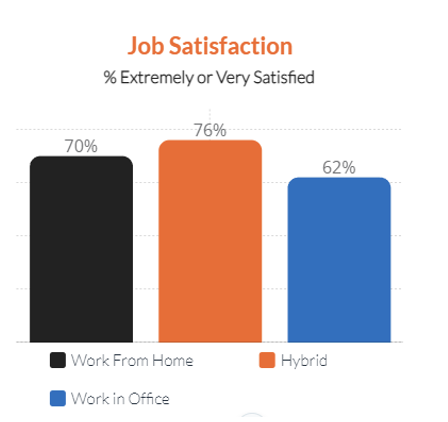
Some recent reports have shown that managers are prepared to fire employees, or cut their pay, if they won’t return to their offices. That may be true for them at this moment, but rest assured, in-office mandates will be relatively short-lived. Talent will gravitate to opportunities that offer flexibility. Companies will either adapt or they’ll die when they can’t hire the people they need.
At the other end of the spectrum, fully remote companies will be a tiny minority. It is very difficult to build a cohesive company when nobody is ever in the same space at the same time. It’s not impossible, but it’s difficult, and it’s not what most people want to build anyway. The majority of entrepreneurs and leaders either don’t have the ability or don’t have the interest.
Hybrid work can offer the best of both worlds when it’s done right. For businesses moving in this direction, this means five big great reshuffles
Change #1: Talent Acquisition
This is good news for both employees and employers. The pool of talent, and the selection of jobs, just expanded. In theory, your next great hire could be anywhere. In practice, not every company is ready for a truly global workforce. Asynchronous working hours are only the tip of the iceberg. Bigger, thornier issues include tax and regulatory obligations, which vary wildly from one jurisdiction to another. This is however positive if you have a global client base and can use the diverse time zones to match your clients.
That said, hybrid working arrangements still mean access to a wider selection of candidates. When all of your employees are expected to be in the office every day, your selection of potential employees is limited to those within — let’s be generous, a 90-minute commute. If employees are only expected in the office once a week, or perhaps even once a month, the extent of that commuter shed expands significantly, by double or even more. Depending on where your office is located, that could easily double, even triple, your candidate pool. And that’s before factoring in access to employees who are only considering hybrid or remote positions.
Change #2: Diversity, Equity, and Inclusion
When work is done in a mostly remote context, it can have the effect of leveling the playing field when it comes to who gets access to promotions and other opportunities to grow. Why? Because it focuses the basis for these decisions on what really matters: performance, meeting, and exceeding expectations. Subjective factors that have played a significant role in these decisions in the past matter less. Things like who’s more outgoing and gregarious in the workplace; who tells the best jokes; and who’s louder, and is therefore perceived to contribute more in meetings.
When meetings are held virtually, there is necessarily a greater degree of moderation; attendees are given the floor in turn, and therefore everyone gets an equal opportunity to have their voice heard (often while others are muted). It’s no longer just the loudest voice in the room. This kind of equity offers the potential of a tremendous advance for people whose first language isn’t the predominant one in the company, for people living with disabilities, and for people who are just naturally quieter.
Access to a broader talent pool allows for a more diverse workforce. The talent pool is increased and from that, with a balanced approach can come greater diversity.
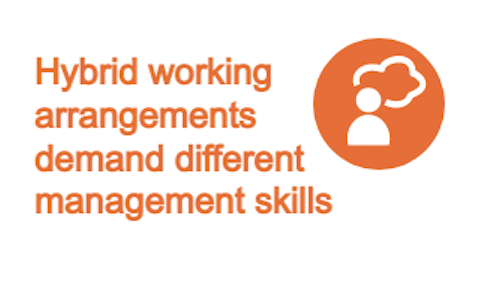
Change #3: Management
Hybrid working arrangements demand different management skills than managing teams in person. Companies that succeed will be those that upskill their current managers, hire more great ones, and let managers go when they can’t (or won’t) adapt. If the new models are not succeeding the leadership and management is clearly the first place to address.
Performance management measurement and expectations must be newly defined. They’ll also need to be very good at communicating those expectations clearly, coaching employees to help them reach them, and holding them accountable when they’re not. This begins with effective onboarding — which, frankly, many companies weren’t great at even when employees were all coming to the same office. Onboarding hybrid and remote employees is not only more difficult, but it’s also more necessary to do very well.
Great managers have even greater relationships with their employees. It’s relatively easy to develop relationships with people when you’re in the same space. With employees one rarely sees in person, it’s more challenging. This is just one reason, among many, that empathy is becoming more widely recognized as a critical skill for leaders to possess and foster. It is a different capability but certainly achievable. Our studies have found most do not feel any loss of opportunity in the change to a hybrid work structure.
Change #4: Employee Well-being
Hybrid work requires a greater attentiveness to and awareness of the mental, emotional, and physical well-being of your people. Contrary to the fearful beliefs of poor managers, most people who shifted to remote work during the pandemic maintained their work focus. Surveys throughout the last few years have shown consistently that home-based employees have worked longer hours than when they were in the office. The mixed reports about the efficiency of those employees highlight the need for better management and coaching mentioned above.
The fact is that there’s a higher risk of stress and even burnout, especially among the truly committed employees you want on your team. Compounding that, hybrid workers are supported less frequently by the social fabric of the office, where collegiality (and sometimes commiseration) with work friends buffered the stresses of the workplace.
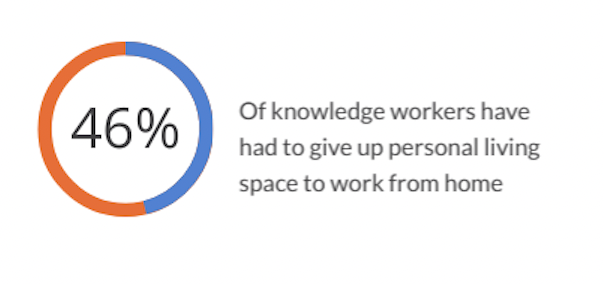
Strong leaders have always been those who understand the importance of their people’s health. That hasn’t changed, and it won’t. But it’s easier to recognize the signs of stress when you’re interacting with employees in person. It will take awareness and intention on the part of leaders to proactively be alert for early signs that an employee’s well-being is at risk. However, our research found that it is those working in the office who tend to be more stressed and have well-being impacted by their work.
Change #5: Culture
Creating a work culture is easier in person. The buzz and hum of a busy office feel energetic. It feels vibrant. It feels collaborative. In the midst of a reshuffle when some or most people aren’t working in the same space, you don’t feel that energy. In a virtual meeting, it is more difficult to recreate the jostle of a group of people huddled around a table. We learn a lot from what we observe.
Here’s the thing, though. The energy of a full office may feel good, but it can be superficial. The fact that conversations are happening between people doesn’t mean that those people are feeling a sense of camaraderie or feeling more attached and committed to their company. The fact that people are gathering together around a table with a whiteboard close at hand doesn’t necessarily mean that collaboration is happening there. This isn’t stated to disregard the potential of in-office energy and collaboration, only to illustrate that in shifting to hybrid work arrangements, we may not be losing as much as we think.
In a hybrid world, people will need to be more thoughtful about how they create and maintain the culture, because ‘people being in the same space’ won’t do it by default. That’s not a bad thing. It allows for more choice in the kind of culture you want to create, and also for more creativity in the ways it is created and sustained. We found those in the hybrid environment were most likely to have a sense of being part of a team.
Leaders will need to be intentional about creating opportunities for people to connect with one another on a personal and professional level, especially between disparate teams that don’t often work with each other. This is an area where we believe companies focused on creating the structure and culture for working remotely early in the pandemic. Whilst these actions likely had different impacts it may explain why hybrid workers, followed by the Work from Home are more likely to have higher employee satisfaction over those working in the office.
The future of work is hybrid. There’s more upside than down in this, but these five changes are truly big ones. Some companies will do better navigating these changes than others. Many will succeed, and some will fail altogether. How hybrid-ready is your organization?
OvationMR has undertaken studies to explore the impact of the Hybrid workforce and other current talent changes. If you would like to explore the data further or discuss this data please contact:
You can also reach us at:
Follow
OvationMR

Michel Jones
Author
Michel Jones is CFO and People Leader at OvationMR a New York City-based market research firm, which she co-founded in 2016.
She provides insights-based management consulting services and is an expert in global HR talent management. She is a regular contributor to the Standard Ovation Blog.
OvationMR is a leader in delivering insights and reliable results across a variety of industry sectors around the globe consistently for market research professionals and management consultants.

Need help with a B2B project?
We are ready to offer you:



